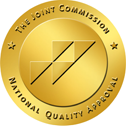
Updated on 2/3/2023
Today’s society has gone above and beyond in normalizing social drinking. Even more alarming is society’s glorification and encouragement of college drinking as a key part of the college experience. Even though young adults are approaching or reaching the legal drinking age while in college, there are still significant mental and physical health risks associated with drinking alcohol. No one is safe from the short and long-term consequences that alcohol can cause on one’s life.
Alcohol is promoted to young adults as a necessary ingredient in having a good time. Alcohol and other drugs may seem like a good idea in the moment, but consuming alcohol even just one time can cause a downward spiral, leading to substance use disorders like addiction. It is essential to understand the consequences that accompany alcohol use in college and understand the factors that play into the development of addiction.
Understanding the Prevalence of College Drinking
Drinking is often considered a ritual or an integral part of the college experience for young adults. Some people enter college with harmful drinking habits, while others develop unhealthy habits quickly through their general exposure to substance use.
No matter where drinking habits initiate, national surveys indicate that nearly 53% of full-time college students between the ages of 18 and 22 drank alcohol in the past month. The same study also revealed that 33% of students engaged in binge drinking in the last month. To best understand the significance of these statistics and associated unhealthy drinking habits, it may be helpful to understand the definitions of several key phrases.
Defining Excessive Alcohol Use
Drinking any amount of alcohol, even in moderation, is harmful to your physical and mental health. Despite this, it is still essential to recognize the warning signs and effects of excessive alcohol use. Knowing these signs can help you identify them in yourself or your loved ones who may be at high risk for developing an addiction or associated health problems.
The Centers for Disease Control and Prevention (CDC) defines excessive drinking as binge drinking, heavy drinking, pregnant drinking and underage drinking.
Binge drinking is defined as a pattern of drinking alcohol that brings blood alcohol concentration (BAC) levels to 0.08%. This pattern typically corresponds to men consuming five or more drinks or women consuming four or more drinks in two hours. Substance Abuse and Mental Health Services Administration (SAMHSA) defines binge drinking as engaging in this drinking behavior at least one day in the past month.
Heavy drinking, also known as heavy alcohol use, is defined as binge drinking on five or more days in the last month. The National Institute on Alcohol Abuse and Alcoholism (NIAAA) defines heavy drinking as:
- For men: consuming more than four drinks on any given day or more than 14 drinks per week
- For women: consuming more than three drinks on any given day or more than seven drinks per week
Health Problems Associated with Binge Drinking
Both binge drinking and heavy drinking are serious but preventable public health problems. The CDC acknowledges binge drinking to be the most common, costly, deadly pattern of excessive alcohol use in the United States. Health risks include:
- Unintentional injuries, including motor vehicle crashes, falls and burns
- Sexually transmitted diseases and infections
- Chronic health diseases, including high blood pressure, stroke and liver and heart disease
- Increased violence and aggression
- Unintended pregnancy and poor pregnancy outcomes, including miscarriage, stillbirth and sudden infant death syndrome (SIDS)
- Memory and learning problems
- Financial instability
- Increased risks of developing chemical dependency, substance use disorders and addiction
Alcohol impairs the body and the mind, making it difficult for individuals to make rational and logical decisions. Alcohol use often leads people to make decisions that they later regret, which adds unnecessary stress to the already overwhelming college experience. It is also critical to point out that if a young adult does not recognize the consequences that alcohol may be causing in their life, they may fall into the cycle of addiction.
Changing the Culture Surrounding College Drinking
College is a time for young adults to gain independence and more freedom in decision-making. Parents may feel like it is their job to step back while their child goes about this new life experience. However, parental involvement acts as a protective factor against substance use and addiction. Consider reaching out periodically and keeping lines of communication open between you and your young adult throughout college. This strategy helps prevent alcohol use and acts as a valuable resource for your child if they find themself needing help or treatment for their substance use.
Change the culture surrounding substance use and addiction in college by questioning why substance use is so normalized and glorified. Consider going against the status quo to maintain long-term physical and mental wellness, free from the consequences of alcohol or other substance use.
Casa Palmera understands that many people become addicted to alcohol through the drinking pressures that society creates. Our treatment facility offers programs for various substance use problems, including co-occurring disorders. We believe in providing the highest quality medical care to all of our patients. To learn more about our facility, give us a call today at (855) 508-0473. We look forward to helping you heal.




